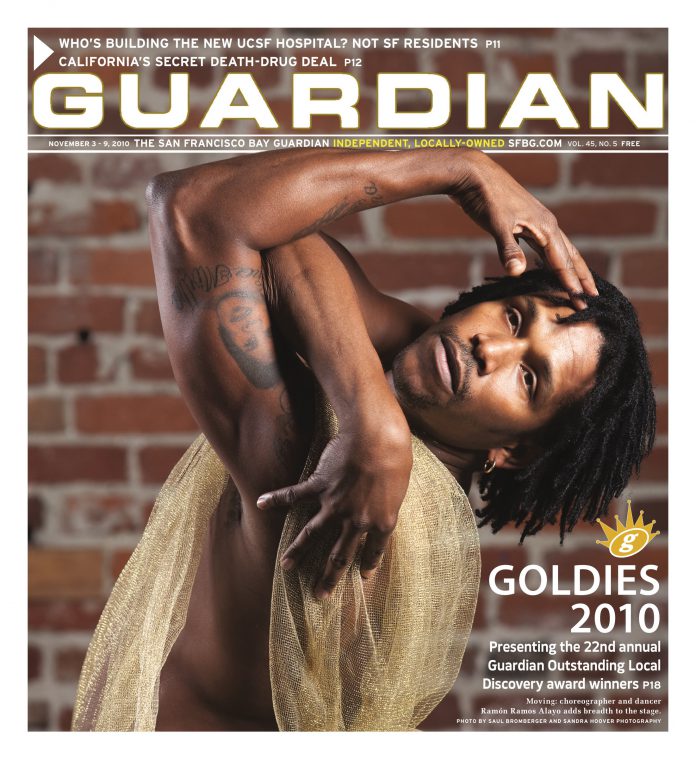Most shows start with a request to turn off your cell phones. Tell Them That You Saw Me begins with an implicit request to leave your virtual mind outside. As the lights come up in this latest work from Jesse Hewit/Strong Behavior (which premiered after a residency at CounterPULSE in August), five utterly gobsmacked women, sprawled in enervated postures on floor and furniture, stare back at the audience for a very long time. The audience is still, but maybe still not seeing everything in front of them, as a micro-choreography of breath and saliva and eyelash unfolds amid a glacial volley of questions and answers. The real seeing takes time and patience and something like courage, things that feel in short supply these days — unless you attend this piece, which requires as well as rewards “attending.”
“It’s a study in focus,” says Hewit, “and it’s a study in what we’re looking at and why, and how we deal with each other for long periods of time.” The piece, he says, made him conscious of a concern he’s had with duration as a condition of social life and a strategy for art. Like an aikido master, Hewit uses the sheer weight of time to unsettle our usual, predictable, and tyrannical rhythms. In doing so he advances an invigorating and revelatory body of work exploring our myriad personal and social identities.
For his part, the 30-year-old choreographer and theater maker is both a unique artist and part of a tight-knit milieu making serious waves across the Bay Area’s performance scene. Much of this network of young, bold, savvy, and mostly queer artists gathers under the banner of The Off Center, an ongoing artist-run performance initiative originally formed around recently-shuttered queer performance incubator Mama Calizo’s Voice Factory. (The group includes close colleague Laura Arrington, the other CounterPULSE summer residency artist, whose Hot Wings shared the bill with Tell Them.)
From ages 8 to 13, Hewit studied ballet in Montreal. But dance went by the wayside as his family kept pulling up stakes and moving, since in most places “it wasn’t cool to be a boy who was a dancer.” He got back into dance while at New York University in Tisch’s Experimental Theater Wing. Then, unexpectedly, he headed to a psychology program in central Florida: “I don’t know what the deal was, but something didn’t agree with me in New York anymore.” After a year-and-a-half, Hewit found San Francisco State’s graduate program in sexuality studies. “I thought I was going to be a sociologist,” he admits. “[But] my mode of expression while in graduate school kept coming back to mounting performances or looking at bodies and posturings, so I realized, ‘Oh, okay, I have to go back and do dance stuff.'”
The theoretical rigor explicitly informs Hewit’s work, but he’s also inspired by an international discourse among dance/theater makers. He recently trained with choreographer Meg Stuart and names among other significant influences New York–based choreographer Miguel Gutierrez, Bulgarian-born physical theater artist Ivo Dimchev, North Carolina–raised feminist choreographer-provocateur Ann Liv Young, and New York’s Big Art Group. Locally Hewit cites people like Erika Chong Shuch, Jess Curtis/Gravity, and Sara Kraft.
Hewit particularly credits Keith Hennessy, a friend and mentor, with drawing his work into an international context. He brings up Hennessy’s balancing of two boards on his head in his Bessie Award–winning show Crotch. “It’s really relentless and impossible and it takes way too long,” he recounts with satisfaction. “It’s nice. It’s always these little sites of resistance — just how quickly do we think things are supposed to happen?”

